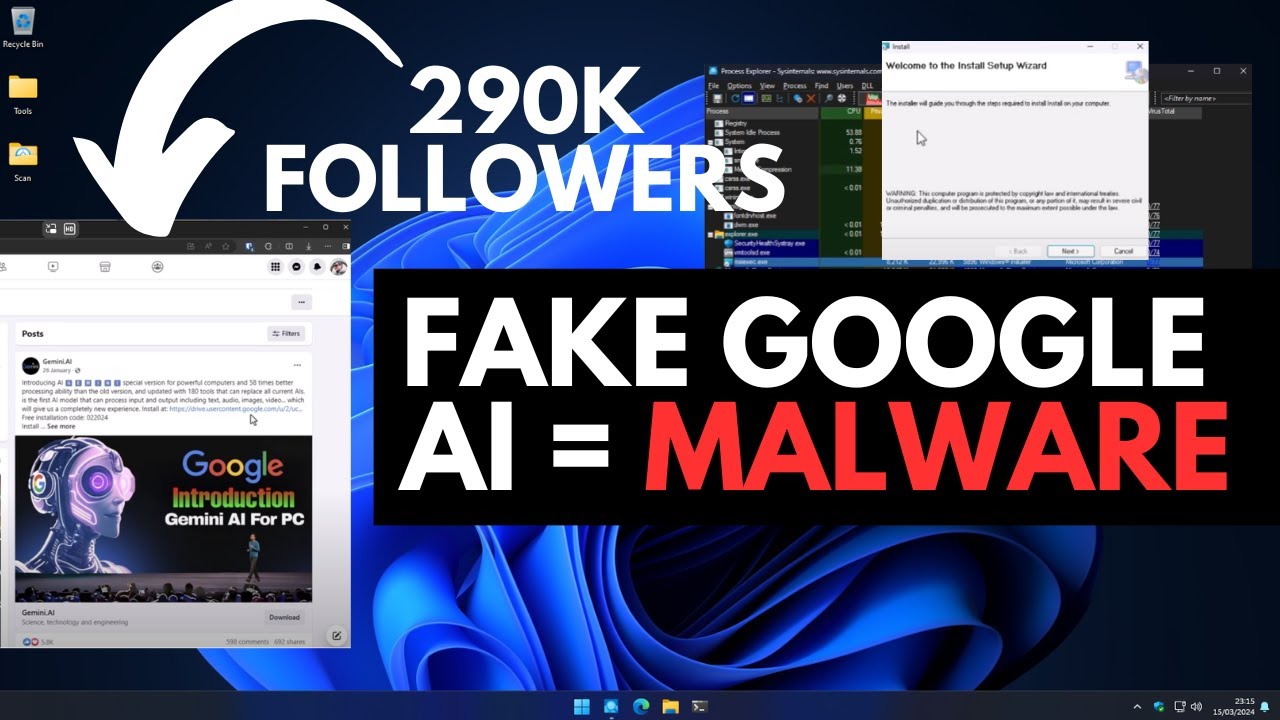How Hackers Deliver Malware to Hack you using Social Media
The Malicious Link on Facebook
One Discord member flagged a Facebook page named Gemini AI, seemingly legitimate with 290,000 followers. The post contained a screenshot of a Google event, embedding a link that appeared to lead to malware. Despite its convincing facade, the link posed a significant threat.
The Download and Extraction Process
Upon clicking the link, a 395 KB rar file was downloaded, hinting at a potentially nefarious payload. Password-protected files like these often evade scanners, concealing malicious intent. Extracting the file revealed an MSI installer, a common guise for malware dissemination.
Data Theft Through Malware
The installer’s innocuous appearance belied its true purpose: to execute a command-line script upon installation completion. This script stealthily captured stored credentials from users’ browsers and transmitted them to the attackers. An unassuming process culminated in a potential security breach.

File Vulnerabilities and Data Storage
Exploring the directories on users’ computers revealed sensitive data stored in cookies files. These files, typically housing authentication information, proved to be prime targets for credential theft. Websites visited, login status, and other details were ripe for exploitation.
A Wake-Up Call
The malware, camouflaged as legitimate Google software, attempted to leverage users’ trust in reputable platforms. Despite being detected by multiple antivirus engines post-analysis, the initial deception could have resulted in compromised accounts and sensitive data exposure.
The Power of Pen-Testing
Transitioning to a demonstration of brute force attacks, the video highlighted the ease with which default credentials could be exploited. Utilizing a sponsor’s pentest tools, a simple scan uncovered vulnerable username-password combinations, underscoring the importance of robust security measures.
Enhancing Cybersecurity Awareness
In a digital landscape where malfeasance lurks beneath seemingly benign surfaces, vigilance is paramount. Online platforms, often viewed as bastions of security, can unwittingly serve as conduits for cyber threats. Through education, testing, and proactive security measures, individuals can fortify their defenses against potential breaches.
As technology advances and cyber threats evolve, users must remain mindful of the intricate interplay between convenience and vulnerability. The digital realm, while offering boundless opportunities, also harbors unseen dangers. By staying informed, adopting best practices, and embracing a culture of cybersecurity, individuals can navigate this nuanced landscape with resilience and vigilance.






















